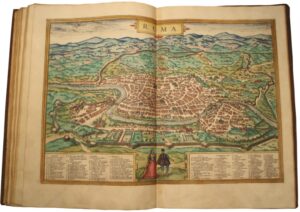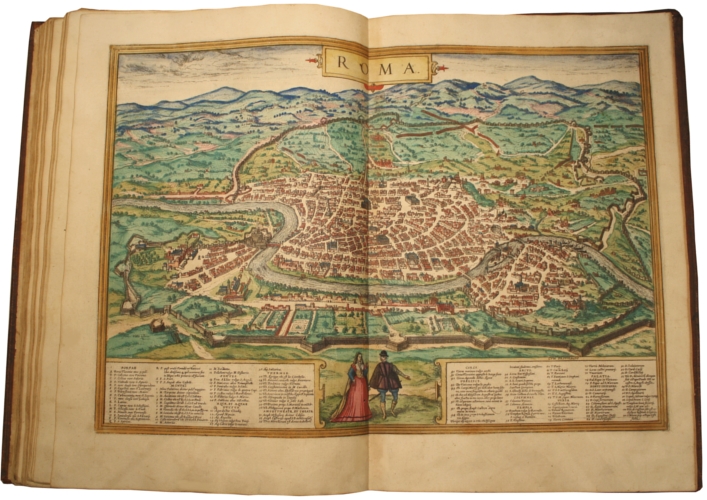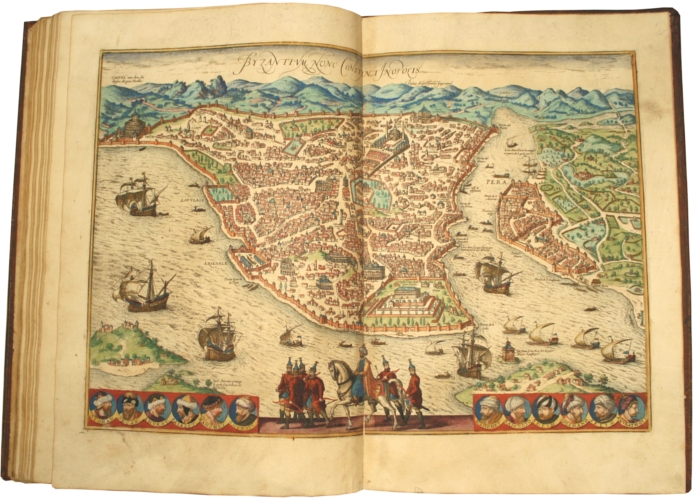BRAUN, Georg and HOGENBERG, Franz. Civitates Orbis Terrarum. Cologne, G. von Kempen, 1575-1588.
4 volumes folio bound in contemporary full calf, spines decorated with gilt fleurons, later arms gilt-stamped in the center of covers. Contemporary uniform bindings. 1 preliminary. lêf of volume 4 bound in volume 3, pl. 43 of volume 1 and 25 of volume 4 come from another copy and were bound in the present copy a long time ago, slight browning and waterstaining, pl. 31 and 1 of volume 4 slightly stained, loss in the margin of pl. 54 of volume 2.
The êrliest printed book showing all the Western and Mediterranên towns at the end of the Renaissance. Koeman, II, B & H 1-4.
Volumes 2 and 4 are from the first edition, volumes 3 and 1 are from the second and the fifth Latin editions respectively. Two other volumes were published few yêrs later, between 1598 and 1617.
The illustration consists of 4 frontispieces and 236 engravings depicting 374 views of towns and plans.
All the engravings were finely contemporary hand-coloured.
The authors of this work are Georg Braun (1541-1622) from Cologne and the engraver Franz Hogenberg (1540-1590).
The “Civitates” were one of the major works from the last quarter of the 16th Century. The publication of this grêt work sprêd over 45 yêrs and most of recorded copies are incomplete.
The present work describes towns of France, Italy, Spain and the Levant (volume 1), from the Netherlands, the Channel Islands, Central Europe and Russia (volume 2).
« The supreme value of this work lies in its survey of Europên towns and cities jus tat the time when draughtsmen were capable of conveying a wêlth of information in a single portrayal ».
The êrliest, the most bêutiful and the most spectacular book of architecture from the Renaissance, dedicated to the representation of towns of Western and Mediterranên world, coloured at the time.
An exceptional copy, complete with all the engravings, preserved in its contemporary uniform decorated bindings, with the frontispieces and the 236 plates finely contemporary hand-coloured.
Provenance: ex libris and arms of the Tempsford Hall Library (from 19th Century).
See less information



